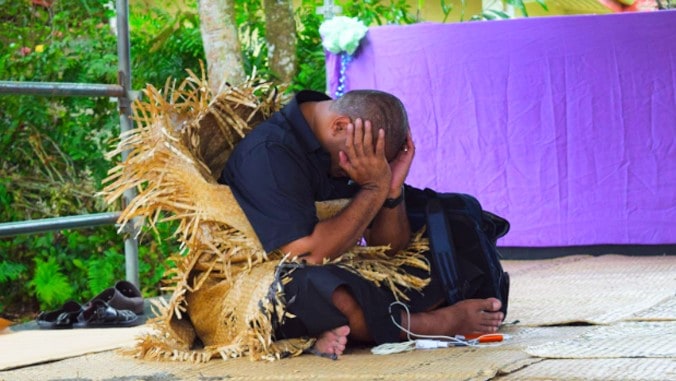Like others across the world, indigenous Fijians (known as iTaukei) in Fiji are facing increased pressure to honor their loved ones with a memorable funeral that can become costly.
A team of interdisciplinary researchers at the University of Hawaiʻi at Mānoa have authored a first-of-its-kind study to systematically collect data and analyse the financing and expenditures of iTaukei funerals in Fiji. It is also believed to be the first study on this topic in the Pacific region.
The study was published in April 2023 in World Development Sustainability. It was authored by Ron Vave, a marine biology PhD graduate; Kimberly Burnett, UH Economic Research Organization associate director; and Alan Friedlander, chief scientist for National Geographic’s Pristine Seas Project and an affiliate researcher at the Hawaiʻi Institute of Marine Biology.
This study found that 70 percent of burials occurred within four to seven days of passing across Fiji, which was not significantly different between village and urban burials.
iTaukei funerals often consist of pre-burial, burial day and post-burial rituals, including large feasts, formal oratory speeches and ceremonies often hosting hundreds of people. Expenses for these large gatherings include kava, food and morgue payments, as well as travel costs.
Data from 239 iTaukei funerals (128 urban and 111 rural) between 2000 and 2020 revealed average cash contributions by the “decedent’s family” and from “condolences” as US$3,104 and US$2,183, respectively. The total cash spent on funerals averaged US$4,979, which is equivalent to five months of Fiji’s annual average household income. Forty-five families (19% of funerals) contributed more than US$4,800 (FJ$10,000) in cash towards funeral costs, with 28 families (12%) securing loans ranging from US$240 to US$7,200.
Recent Fiji Bureau of Statistics (2021) data reported 29.9% of Fijian residents were living in poverty, of which 36% were iTaukei. To balance a respectable funeral against household survival, families reduced costs by modifying select rituals, prepared ahead by saving, or participated in communal functions.
This research shows that although funerals may not yet be considered a social economic burden, early research can identify and address issues, thereby enhancing community resilience. Despite difficult economic times, there has been an increasing emphasis on funerals, resulting in poorer iTaukei.
The authors note that while the research focused only on cash as it was easier to quantify, this was also a limitation as Pacific peoples (including iTaukei) have equally or higher in-kind contributions such as root crops; protein such as beef, pork or fish; traditional artifacts such as mats, tapa, kava, sperm whales teeth known as tabua; as well as the social capital of looking out for each other and returning favors (reciprocity).
UH Mānoa course options vital to research
Part of the reason research on funerals is scarce is due to its extremely sensitive nature, the authors noted. Several UH Mānoa courses in the fields of sociology, anthropology, natural resources and environmental management, interdisciplinary studies, and an oceanography statistics course using R (programming language for statistical computing and graphics) helped Vave as he was designing and preparing for this research.
He credits the ability to earn an interdisciplinary PhD in marine biology to the willingness and flexibility of the Marine Biology Graduate Program—to research funerals as a focus. Equally important was the interdisciplinary work of Vave’s dissertation committee, he said. In particular, committee chair Friedlander’s flexibility and trust for Vave’s work to be guided by needs identified by Fiji’s Ministry of iTaukei and communities which was crucial to the success of this work.
This research was part of the National Science Foundation’s Coastal Science, Engineering and Education for Sustainability project award #1325874 on “Understanding the links between local ecological knowledge, ecosystem services and community resilience.”
This project enhanced local capacity in decision making to manage coastal areas for sustainability, and contributed to policy development in resilience and adaptation to climate change. The work was integrated with interdisciplinary and international educational and training activities for undergraduate and graduate students, especially members of groups underrepresented in the sciences.
